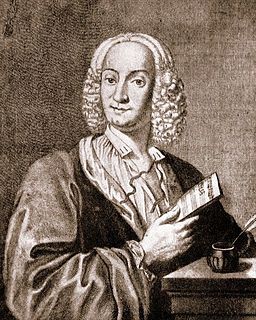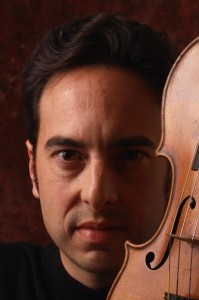An ostinato is a musical motif or phrase that is persistently repeated. Here are three pieces from the Baroque period that are constructed around a repeating bass line known as a basso ostinato, or ground bass. In each case, the bass line provides the framework for a set of increasingly complex and thrilling variations. It’s as if the composer is saying, “Listen to how clever and inventive I can be!”
Canon in D…Johann Pachelbel (1653-1706)
The performance below by the San Francisco Early Music Ensemble uses period instruments and attempts to authentically capture Baroque style. Notice that the bows differ slightly from our modern bows and hardly any vibrato is used.
The cello provides the ground bass. Listen to the contour of this bass line as it moves stepwise downward and then gets pulled back again. A Baroque organ and theorbo (a plucked string instrument similar to a lute) fill in the harmony, providing what is known as a continuo. The solo violins perform a three part canon. A canon is “a contrapuntal composition that employs a melody with one or more imitations of the melody played after a given duration.” In Pachelbel’s canon the voices are two measures apart. Pay attention to the way the three identical solo parts fit together.
Passacaglia…George Frideric Handel (1685-1759) Arranged for violin and viola by Johan Halvorsen
Similar to a chacconne, a passacaglia is a Baroque dance form that features a series of variations over an ostinato bass. Handel wrote this music for a harpsichord suite that was published in 1720. The Norwegian violinist and composer Johan Halvorsen (1864-1935) made this spectacular arrangement, re-scoring Handel’s variations for violin and viola. Here, violinist Itzhak Perlman and violist Pinchas Zukerman perform this dazzling virtuoso showpiece as an encore.
Passacaglia and Fugue in C minor, BWV 582…Johann Sebastian Bach (1685-1750)
You will hear amazing new details each time you listen to this piece. Bach was a master of counterpoint, which is “the technique of combining two or more melodic ideas in such a way that they establish a harmonic relationship while retaining their linear individuality.” Listen to the way Bach weaves new musical lines over the repeating passacaglia theme. Also, listen to the exciting ways Bach chooses to harmonize these lines. Like Pachelbel, Bach was an organist and, starting out with a pre-existing melody (often a choral tune, but in this case a passacaglia), he improvised this complex music for church services. Only later were these improvisations written down.
The second part of the piece is a Fugue (starting at 8:06) which is “a contrapuntal composition in which a short melody or phrase (known as the subject) is introduced by one part and successively taken up by others.” Bach uses the first eight notes of the passacaglia theme as his subject. See if you can pick out the subject each time in enters. Sometimes it will be higher in register, other times lower, and it will usually be surrounded by other musical lines. The music becomes increasingly complex, modulating to different keys before triumphantly returning to the home key of C (this time Major replacing minor).
Enjoy the music and if you feel inspired, leave a comment below. Your insights greatly enrich the conversation!



